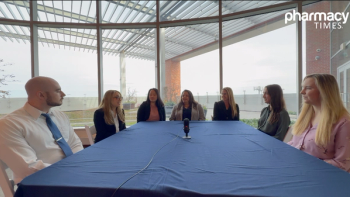
ACR Symposium Shows Need for Novel Drug Discovery Methods
Using data and bioinformatics could hold the key to numerous treatment options.
Only 1 novel lupus treatment has received FDA-approval in the past 50 years, which leaves patients with limited options, and shows the need for advancement in research methods.
In a session presented at the American College of Rheumatology and Association of Rheumatology Health Professionals annual meeting, Peter E. Lipsky, MD, discussed his efforts to further lupus treatment options. This session is part of the Mining Big Data for Drug Repurposing symposium.
Data mining and genetics may play a key role in creating new treatments or repurposing other drugs for autoimmune rheumatic diseases.
“Lupus has not been 1 of our great triumphs,” Dr Lipsky, co-founder and CEO of AMPEL BioSolutions, said. “There’s a clear, unmet clinical need for more treatment options. All of the research that has been done throughout the years hasn’t generated new ideas or treatments, so we must look elsewhere.”
During the session, Dr Lipsy introduced bioinformatics, and how it could potentially be harnessed to create new treatments for patients with autoimmune diseases. His company, AMPEL BioSolutions, uses bioinformatics to identify existing opportunities for more personalized treatments.
“These have become very important tools in developing new treatments in the oncology world,” Dr Lipsky said. “Mining literature and detailed analyses have led to the development of very specific therapies for cancer treatment. Many of these targeted therapies are highly successful when used in specific subsets of patients. When you find the right combination of patient and treatment, you have very high success rates.”
This method has already shown success in oncology, and may also be useful for creating treatment for rheumatic diseases as well.
“It’s exciting to be able to take publically available data and analyze them in detail to find the appropriate pathways to target,” Dr Lipsky said. “This is just the beginning of this field, and it’s hard to know where it’s going to take us, but the potential is great. Using big data analysis tools lets the biology speak to us. Specific disease signatures emerge, and we hope the identification of new pathways and targets will follow.”
Also included in the symposium will be a similar session presented by Robert Plenge, MD, PhD, vice present and head of Translational Medicine at Merck. At Merck, Dr Plenge and his team have worked to discover targets and pathways based on biology.
Dr Plenge will discuss a genetic approach that can be used for drug discovery research as well as the cost of drug research and development.
“We need to improve the productivity of drug research and development,” Dr Plenge said. “Human genetics and related approaches could help.”
Newsletter
Stay informed on drug updates, treatment guidelines, and pharmacy practice trends—subscribe to Pharmacy Times for weekly clinical insights.




















































































































































































































